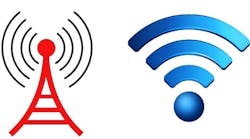Predicting the future is easy. The trick lies in getting the timing right. For example, 2012 failed to bring us either the Mayan end of days or those flying cars that the science fiction writers promised us back when we were children. That doesn’t mean that we’ll never have flying cars, or that three-dimensional road rage and texting wouldn’t bring about the end of civilization. But it just didn’t happen in 2012.
If the Mayans and the sci-fi writers appear to have been a bit hasty, you can’t say the same about Intel cofounder Gordon Moore. Way back in 1965 he stated that the number of transistors that could be placed on an IC would continue to double approximately every two years, and his prognostication has proven to be accurate.
Just as Moore predicted, the devices designed and produced in 2012 were smaller, smarter, and less power-hungry than their predecessors. The devices of 2013 will be even better. As the cost of embedding intelligence and network communications continues to drop, we will keep moving in the direction of the “Internet of Things,” a world in which just about anything, anywhere, can be a node on a network.
When new technologies become available, people find unexpected ways to use them. Radio was visualized as a wireless telegraph system, but it wasn’t long before entrepreneurs repurposed it to provide advertiser-sponsored entertainment.
Facial-recognition software was designed to improve security at airports, but retailers have discovered that it can also be used to observe customers and to provide insights into new targeted marketing strategies. If you’ve ever had the creepy feeling that a department store mannequin was watching you, you probably don’t want to know that the latest and greatest mannequins are not only watching you, they’re listening as well.
Wi-Fi A Winner
Steady improvements in Wi-Fi technology have given it enhanced range and reliability to complement its high speed and innate interoperability. And the latest chipsets not only target high power and higher speeds, they address low-power, lower-bandwidth applications as well. That will let Wi-Fi steadily nudge its way into formerly forbidden areas like the battery-powered sensor market.
Wi-Fi’s great bandwidth will open the door to additional innovation. Like a new expressway filling up with traffic, where bandwidth exists, people will find reasons to use it.
Also, Wi-Fi will support the expansion of bring your own device (BYOD) networking. Early versions of Wi-Fi had weak security protocols, which made it a risky proposition in business applications. As a result, many organizations have preferred to impose strict controls over Wi-Fi network access, even equipping staff with smart phones and laptops that could be kept under the aegis of the corporate IT department.
But startups and small businesses, with their limited budgets, will take advantage of the improvements in Wi-Fi security to create an entirely different network model. Even visitors will be allowed to connect and to use collaboration utilities like cloud-based project management tools and videoconferencing. This model will extend beyond people and into things. A sensor’s value goes up when its data can be mashed into multiple applications.
Cellular Gaining Traction
Cellular networking will also grow in 2013, and the cellular wireless carriers will continue to promote the establishment of machine-to-machine (M2M) networking standards. Talk and text time have leveled off, and the carriers know that they can’t truly grow their data business until machines can speak a common language.
This is still a work in progress, but you can expect to see some standards beginning to emerge from the shadows during 2013. Proprietary and closed systems will persist for a year or two, but the winners will be the organizations that embrace open systems. We’ll start to see the shakeout by 2014.
It’s safe to predict that Wi-Fi and cellular networking will both experience tremendous growth in the coming year. Smart phones and tablets will certainly use them to take over many of the functions that were formerly performed by laptops and wired connections. Innovators will find new ways to exploit their capabilities.
Personally, I’m hoping that the sci-fi writers weren’t as far off base as we think and that Wi-Fi and cellular will be part of the navigation system that helps me park a shiny, new Ford pickup on my rooftop landing pad.
